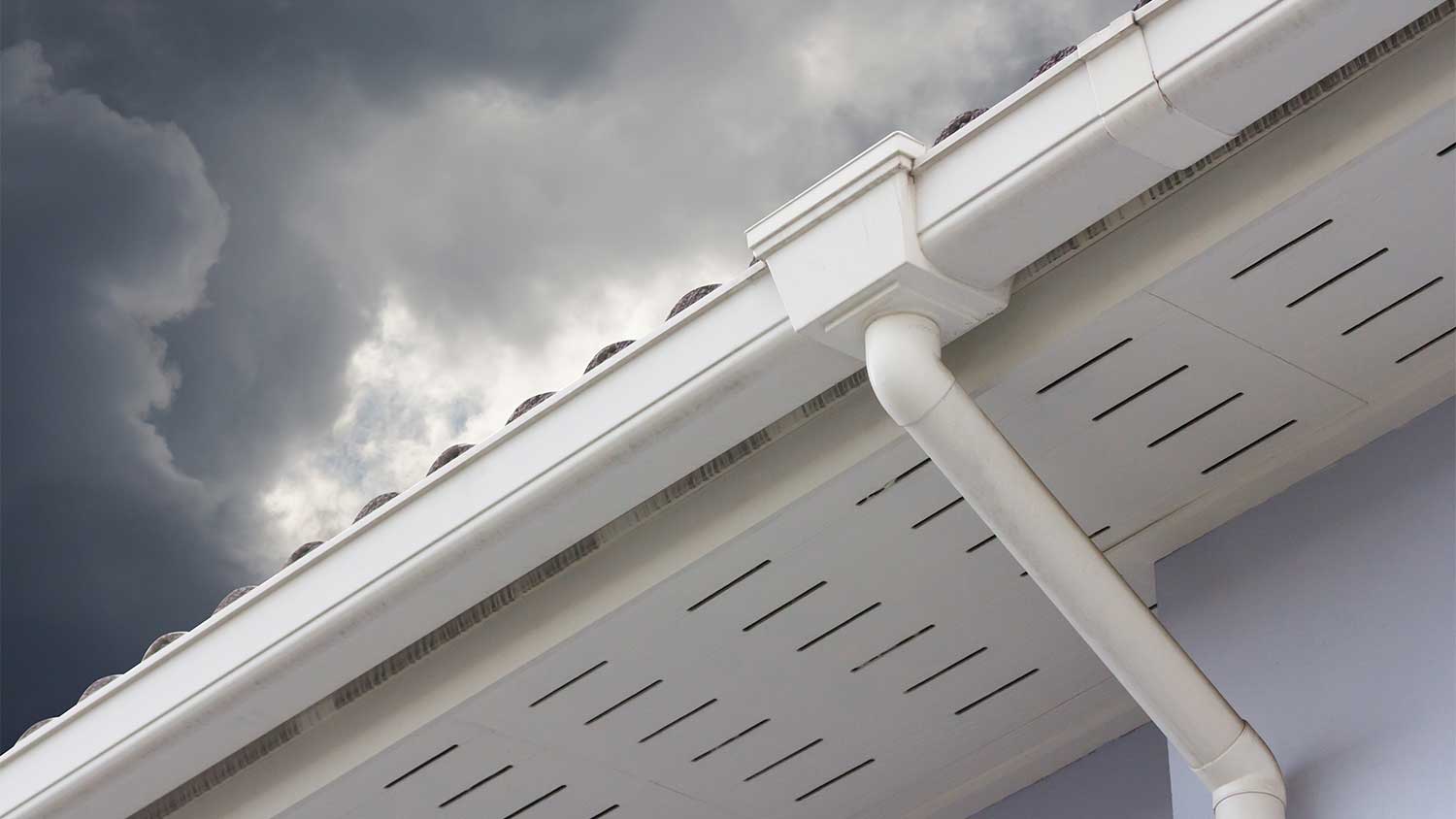Top 12 Gutter Drainage Solutions and Tips
Solve water woes with these gutter drainage solutions


A bad gutter can drag your home's foundation into the gutter pretty quickly! Clogged or misaligned gutters put your home at risk for mold, rot, and structural problems that drain your budget. If you're noticing pooling water, you need to know about these essential gutter drainage solutions for all homeowners.
1. Regularly Inspect and Clean Your Gutters
With the average homeowner spending $162 on professional gutter cleaning, this preventative step is more than worth it. Gutter cleaning removes debris that can clog your gutters. Clogged gutters allow mold and mildew to form in your home's roofing and framing. Clogs can also cause your gutters to sag. If gutters are allowed to stay clogged for long enough, you may end up with basement and foundation leaking.
It's recommended that you schedule gutter cleaning at least twice a year. You may need to have your gutters looked at more frequently if your home is surrounded by trees that deposit leaves and debris onto your roof.
2. Install Gutter Guards
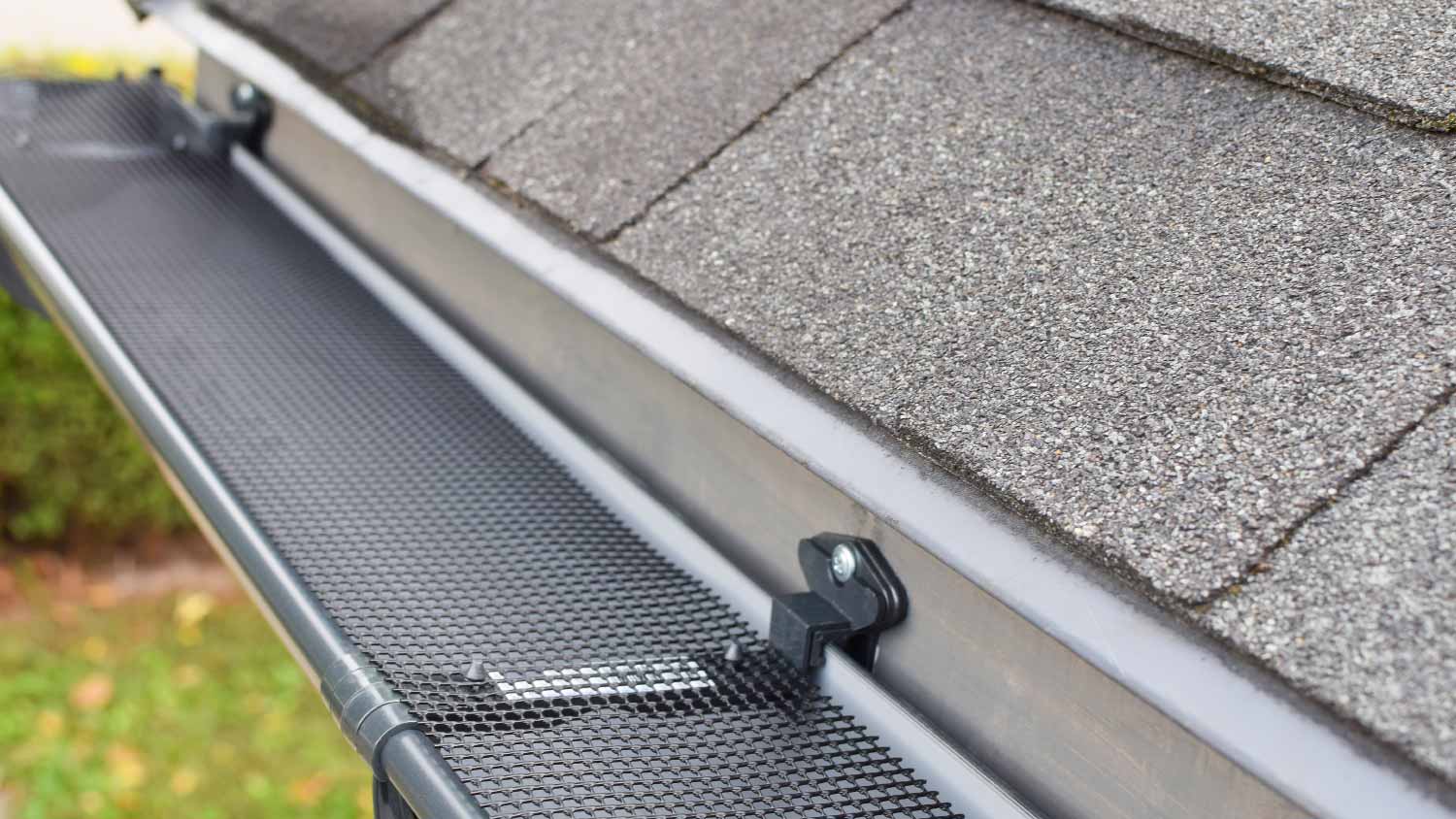
Gutter guards go over your gutter system to keep debris out. While you'll still need to schedule cleanings to grab any leaves or debris that sneak through, gutter guards drastically reduce the potential for gutter clogging. Also known as gutter screens or gutter helmets, gutter guards create a physical barrier between your gutters and menacing leaves, twigs, nesting animals, mold, mildew, and more. They can also help to prevent ice dams in freezing weather.
If you live in an area with a dry season, gutter guards can potentially prevent fires by stopping windblown embers from mingling with dry leaves and pine needles trapped in your gutters.
3. Add Splash Blocks
A splash block is a fairly simple and inexpensive mechanism that helps to divert water away from your home to prevent pooling around your foundation. Splash blocks are meant to be placed under every downspout in your drainage system. A high-quality splash block should be able to carry water at least 3 feet from your home. Consider splash blocks if you have concerns that water that's pooling around your home could cause basement flooding.
4. Install a Rain Barrel
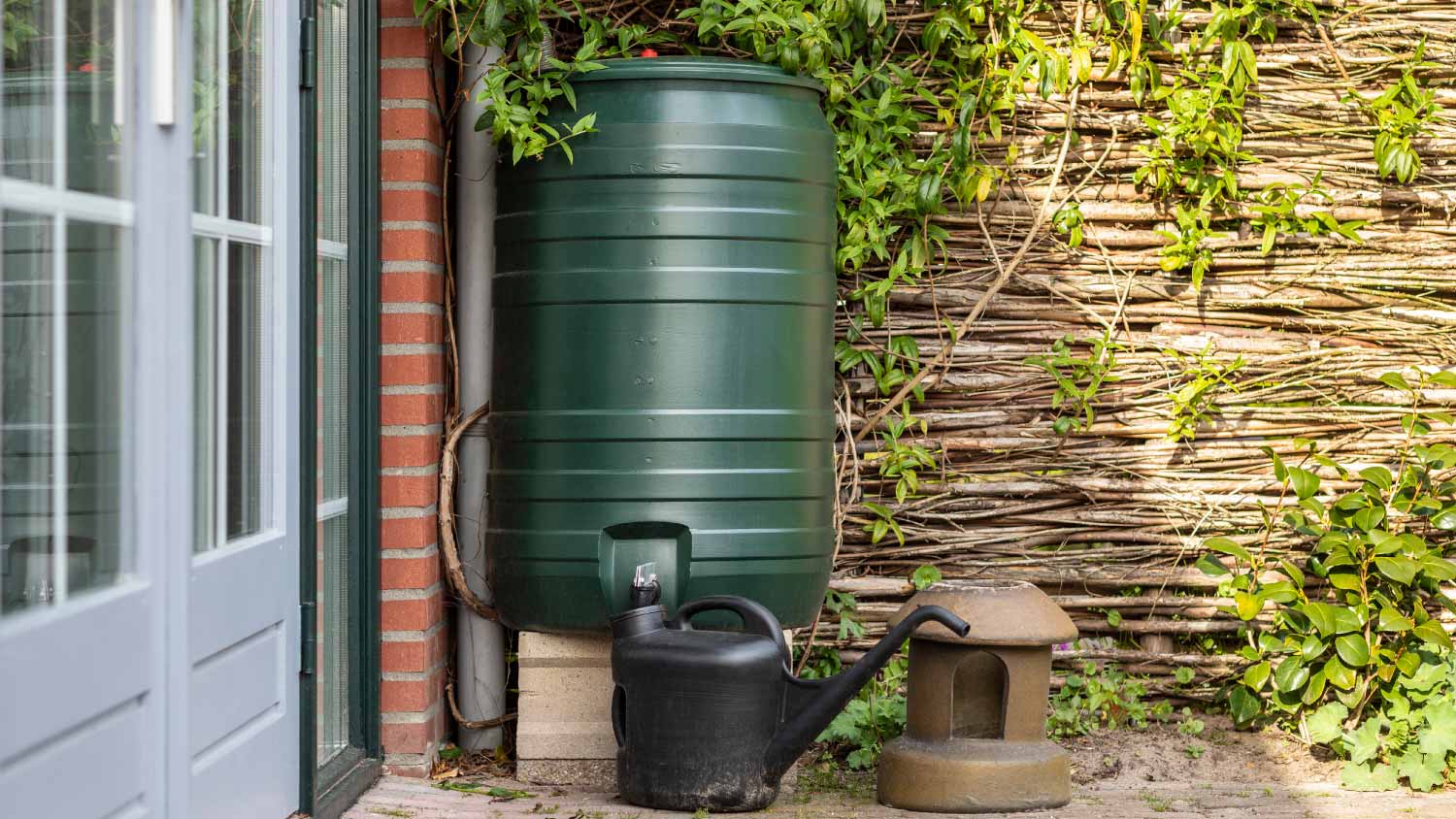
The simple and timeless rain barrel is actually a big help to modern homeowners! Rain barrels capture roof runoff to reduce the amount of water left pooling around your home. The best part is that the water that's collected can be used for watering a garden or lawn. While a rain barrel isn't one of the best gutter drainage solutions for serious issues, it can play a role as a great eco-friendly addition.
5. Extend Existing Downspouts
You should consider extending your downspouts if rain and melted snow aren't being carried far enough away from your home using your current configuration. You'll know that your downspouts aren't diverting water far enough if you notice water pooling near your home's foundation. This creates risks of flooding and cracking in your home's basement.
The way to extend downspouts is to connect them to buried PVC pipes capable of carrying water further from your home. Depending on your terrain, this can be a challenging project. You may need to work around buried rocks and boulders that block clear pathways from your home to a safe drainage area. The steps to extending downspouts include:
Planning a drainage route.
Digging a trench
Laying pipe
Backfilling with soil
6. Utilize a Rain Chain
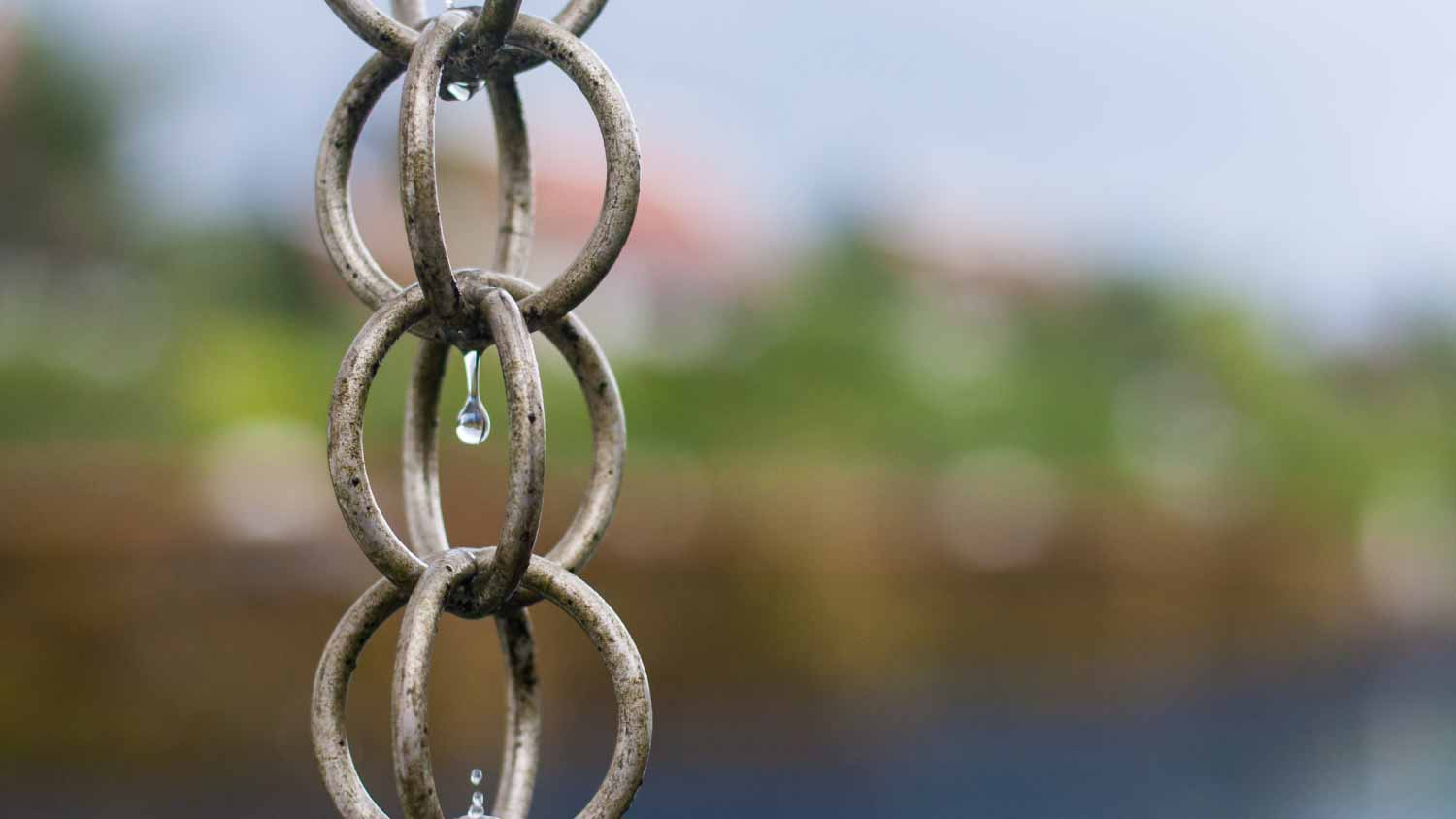
A rain chain is an aesthetically pleasing alternative to a downspout. Like a downspout, a rain chain carries collected rainwater from your gutter away from your roof. While rain chains are 100% functional, they are also beautiful and peaceful. They come in a variety of ornate designs. When water trickles through a rain chain, it makes a meditative sound.
Many people direct rain chains into barrels and basins that make it possible to use rainwater in plants and gardens.
Most people choose one highly visible downspout that they'd like to replace when adding a rain chain. Unlike some of the bigger drainage solutions for your gutter system, installing a rain chain is an easy DIY task. Of course, you might want to bring in a pro to verify that this is a smart option based on the flow coming off your roofline before swapping out a dependable downspout.
7. Install a French Drain
If your home has severe pooling around the foundation after rain or snow, installing a French drain may be your only option for preventing severe foundational damage. A French drain diverts pooling or leaking water on a property away from the home. It is one of the best methods for rerouting water on your property to ensure that your home's foundation stays dry.
A French drain is created by digging a ditch in a sloped area. A perforated drain pipe is then installed under a layer of gravel within the ditch. When heavy rain comes, the pipe funnels water away from your home's foundation to deposit it in a safer location. Generally, the deposit point for a French drain is an underground cistern or municipal storm drain.
French drains are common fixes in swampy yards. However, you'll need to have some degree of sloping on your property in order for this type of system to be effective.
Due to the complexity and code requirements involved with designing and installing a French drain, this is a job that's best left to experts. The average cost to install a French drain is $9,250.
8. Examine Your Gutter Slope
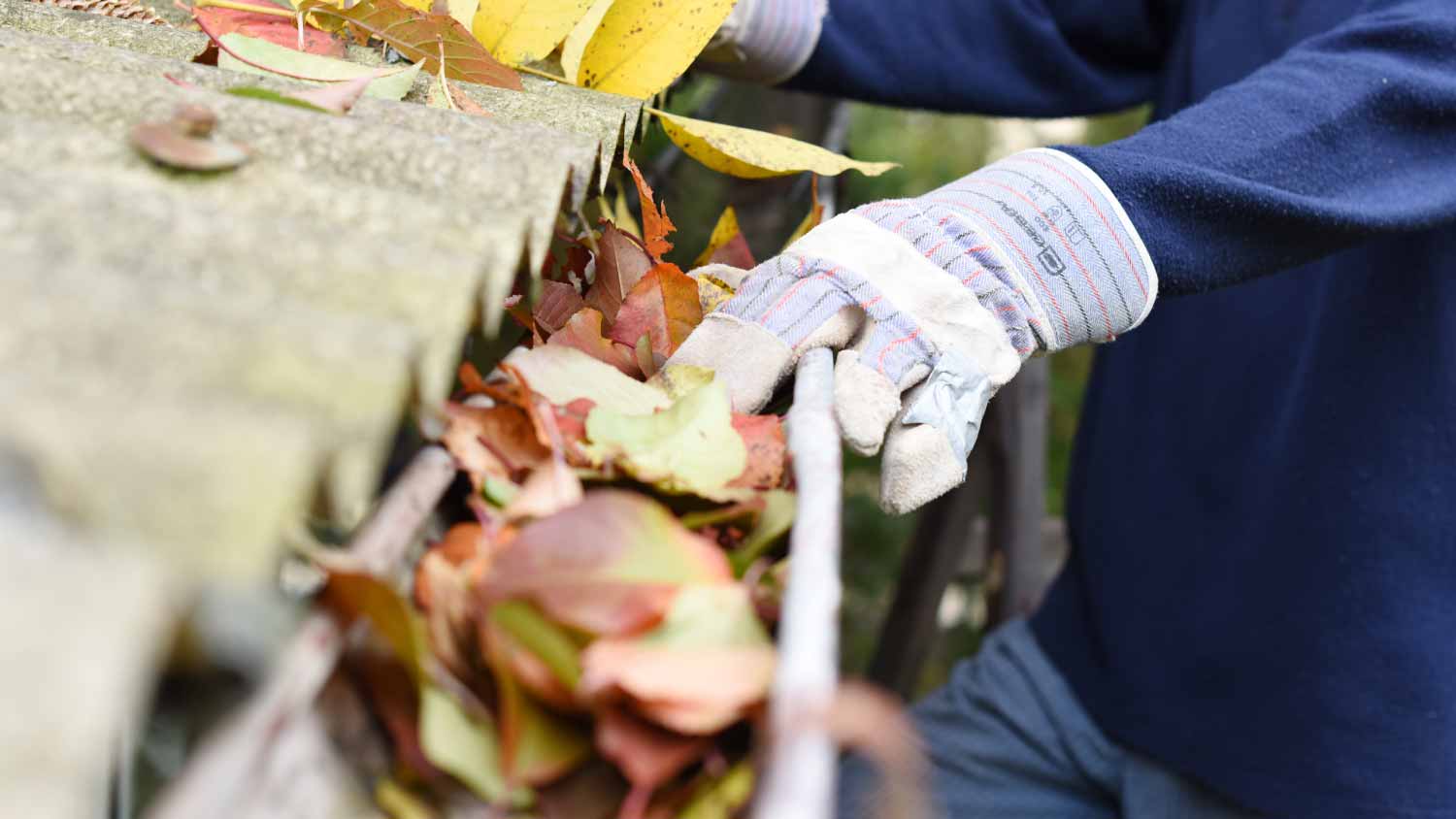
The best action is sometimes a good inspection! Did you know that something called gutter slope could be responsible for the overflow and flooding that's happening around your home's foundation? Also known as gutter pitch, gutter slope refers to the amount of slanting in your gutters. The slope is important because it allows for proper water flow. When the slope is too flat, you'll get clogged gutters. When the slope is too severe, you'll get water rushing toward your foundation.
While excess water is the main sign of improper gutter slope, you may actually be able to notice that your gutters look "off" using just a visual inspection. If you're wondering how to fix sagging gutters, correcting the gutter slope could be an easy solution for taking excess weight off your gutters.
The good news is that calling in a local gutter pro to realign improperly sloped gutters is often enough to fix the problem.
9. Bury Your Downspouts
If you want to redirect water in your yard without creating an eyesore, burying your downspouts is something to consider. Underground downspouts guide rainwater away from your home's foundation. The best part about this project is that you can actually divert that excess water toward gardens, flowerbeds, or other "thirsty" parts of your lawn instead of letting the water go to waste.
With this project costing as little as $25 to $50, burying downspouts is considered a low-cost alternative to French drains. Just be prepared to spend a few hours digging if you'll be attempting this as a DIY job!
10. Fill Low Spots
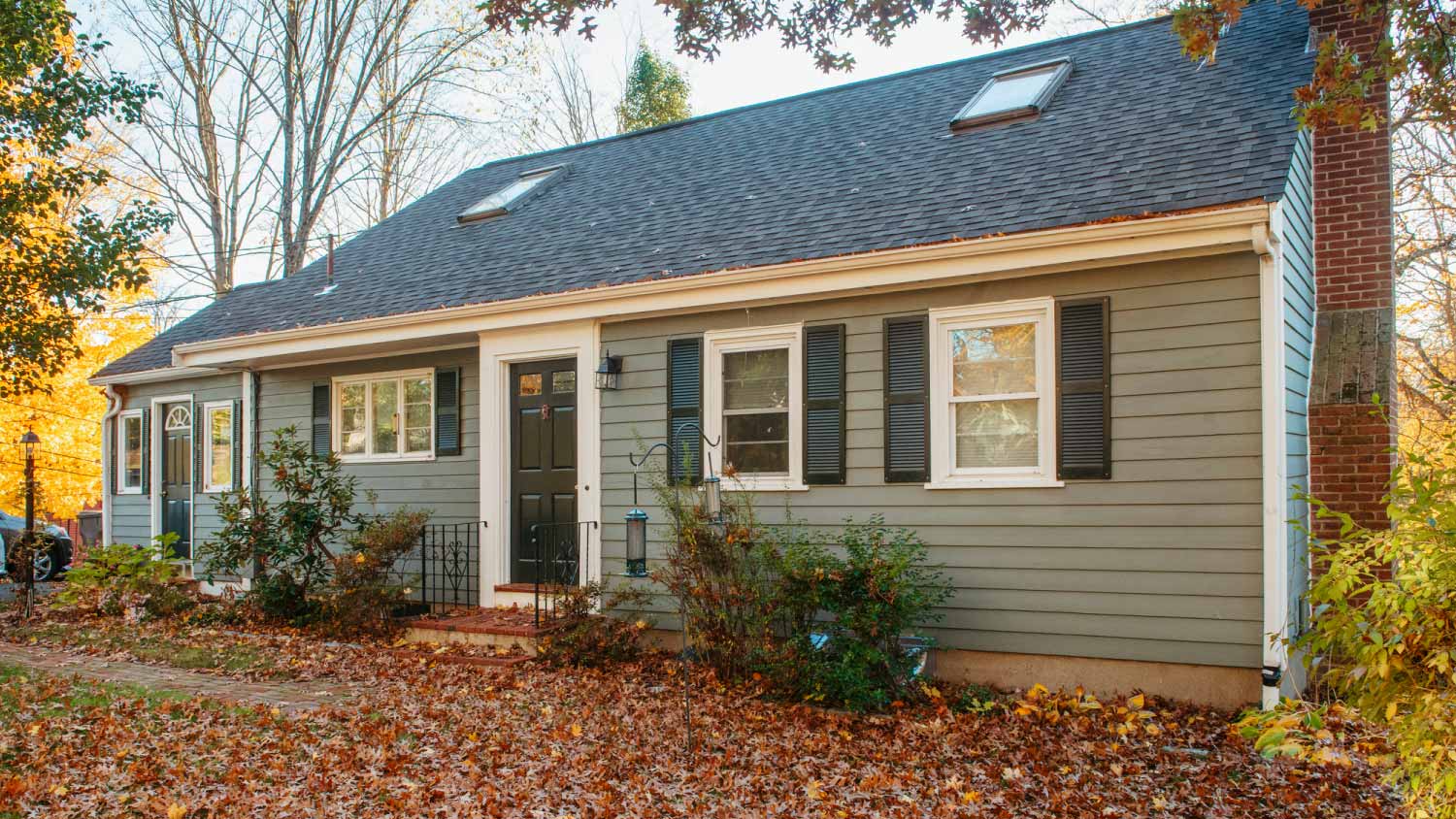
Do you suspect that low spots are responsible for the standing water near your home's foundation? This is common at homes nestled into hilly or sloping terrain.
If you have a small dipping area in your yard, you may fix the problem just by filling it in with compost or topsoil. Earthworm-rich compost is especially beneficial in this situation because it will help to create loose soil over time. "Low" areas of a yard tend to be composed of compacted soil. While bringing in bagged soil may be less expensive in the short term, paying to have good soil brought in will pay off in the long run.
If you have an extreme case of pooling water near your foundation, consider hiring a professional to regrade your yard. Using a bulldozer, landscaping professionals will redefine the contours of your yard to redirect water flow away from your home.
11. Consider Drain Sleeves
A roll-out drain sleeve, installed at the bottom of your downspouts, can help divert water away from your home. The sleeves extend during heavy rain, carrying water away from your house, then disperse water from small holes. Once the rain has stopped, the sleeves conveniently roll back up. Roll-out drain sleeves are also inexpensive—less than $20—but they do have a downside: if the rainfall isn’t heavy enough, they won’t unfurl and might prevent proper gutter drainage.
12. Build a Rain Garden
By building a rain garden, you can send the water from your gutter into a planting bed that will filter it and let it disperse into the soil, helping to nourish the plants in your yard rather than run off into the sewer. When your garden captures the water, it should drain into the soil within a day, quick enough to prevent mosquitoes from breeding. Your yard will be protected from erosion when paired with a rain chain, which slows water as it falls from the sky.
Frequently Asked Questions
Poor gutter drainage can cause sagging gutters, roof damage, mold, mildew, rot, basement flooding, and foundation cracks. With gutter replacement costs possible for just $500, getting the right system can save you thousands in repairs down the road.
The first rule of knowing how to install gutters is that water coming from gutters should be directed 4 feet to 6 feet away from your home. Depending on the specifics of your property, water can be directed to a cistern, municipal drainage ditch, or the street. Water should never be directed toward a neighbor's yard.
Gutter life span varies by gutter material. You can get 25 years for aluminum gutters, 50 years from copper or zinc gutters, and 10 to 15 years from steel gutters. The best way to determine if you need new gutters is to have your current gutter system inspected by a professional. While replacement may be an option, gutter realignment or repair may buy you more time.





- 10 Signs Your Gutters Were Installed Incorrectly
- Importance of Gutter Slope to Your Home
- Top 10 Gutter Alternatives [2024 Guide]
- Why Is Water Leaking Between the Gutter and Fascia?
- 6 Gutter Placement Tips for Hanger Spacing, Slope, and More
- Gutter Cleaning 101: What Does It Include and Why Is It Important?
- A Clogged Gutter Can Lead to a Damaged Foundation—Here’s Why
- 5 Reasons for Overflowing Gutters and How To Fix It
- What is a Downspout? Their Important Role in a Gutter System
- Here’s What to Do If You Have Standing Water in Your Gutters



